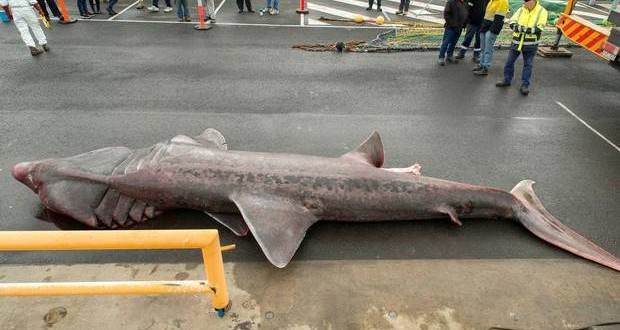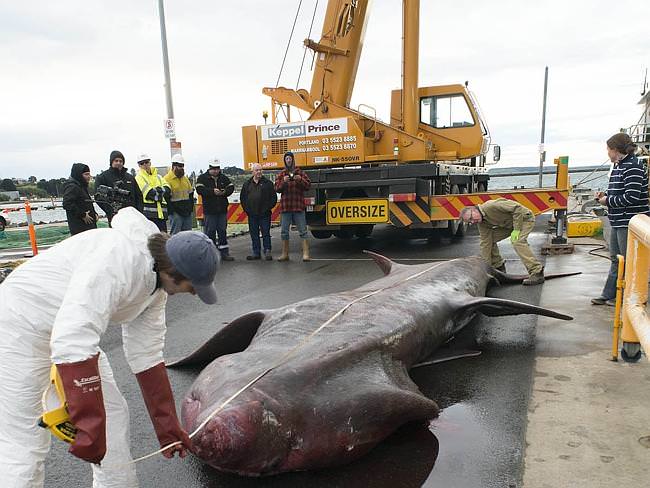A giant basking shark has been caught accidentally by fishermen off the coast of Australia, causing excitement among scientists but enraging conservationists.
Weighing almost three tonnes, the 6.5 metre-long male basking shark was the surprise find for fishermen on Sunday, who found the deceased animal in their nets.
Senior collections manager of vertebrate zoology at Museum Victoria Dianne Bray praised the captain’s initiative in alerting the museum.
The second biggest fish after whale sharks, basking sharks are rarely found in Australian waters because they live well-off the continental shelf.
On hearing the news, Museum Victoria scientists headed to Portland take samples and measurements from the creature which is under-represented in the museum’s collection.
Martin Gomon, senior curator of ichthyology at the museum, said until now the species was only represented by teeth and gill filaments collected in 1883 by the museum’s former director Frederick McCoy.
Contemporary reports highlighted the enthusiasm the public showed at the ocean giant’s Melbourne arrival after travelling by rail from Portland, with people flocking to see it as it travelled on an extended cart up Swanston Street. It later went on display at a stable yard.
However it wasn’t on show for long. Melbourne’s summer weather took hold and the carcass, which had been sampled, sketched and measured, soon “defied approach”.
Move forward 130 years and the information that can be gleaned from samples has advanced beyond recognition, thanks to technology.
The CSIRO and Museum Victoria’s biobank will benefit from tissue and skin samples taken from the basking shark on Monday. These will be available for DNA and isotope analysis which could reveal where the shark lived and what it ate.
After using a crane to unload the 2.6 tonne shark from the trawler, scientists also took measurements and larger samples from the animal on the wharf.
Dr Gomon said eight vertebrae, the fins and tail fin as well as the head with its jaw and teeth intact were removed and transported to Melbourne. The head and fins will be used to make a mould, which will go on public display.
Agencies/Canadajournal

 Canada Journal – News of the World Articles and videos to bring you the biggest Canadian news stories from across the country every day
Canada Journal – News of the World Articles and videos to bring you the biggest Canadian news stories from across the country every day



Accidents happen, at least they ‘owned up’ so to say instead of just dumping the carcass.